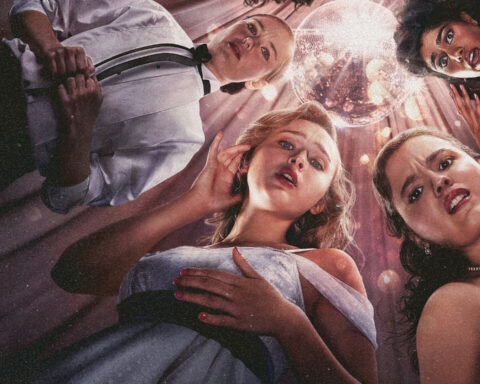The final chapters of Cobra Kai’s sixth season deliver a masterclass in legacy storytelling, blending nostalgic callbacks, emotionally charged character resolutions, and jaw-dropping martial arts sequences into a package that satisfies both longtime fans and newcomers. By focusing on the core themes of redemption, mentorship, and the cyclical nature of conflict, Season 6 Part 3 elevates the series beyond its ’80s action roots while honoring the spirit of the original Karate Kid films. The finale’s meticulous attention to character growth, coupled with stakes-raising tournament drama and quieter introspective moments, cements the show’s status as one of streaming’s most consistently rewarding franchise extensions.
The Sekai Taikai Tournament as Global Stage
The decision to center the final season’s climax around the fictional Sekai Taikai international martial arts tournament proves inspired, providing a narrative framework that allows every major character—from original trilogy veterans to newer teen fighters—to confront their personal demons. By expanding the conflict beyond the San Fernando Valley to a global arena, the writers smartly avoid repetitive dojo rivalries while maintaining the intimate character dynamics that define the series. The tournament sequences showcase production values surpassing previous seasons, with wide-angle shots emphasizing the scale of competition and tight close-ups preserving the emotional weight of individual matches.




Generational Passing of the Torch
A particularly poignant throughline involves Johnny Lawrence (William Zabka) finally embracing his role as a mature sensei, channeling his combative energy into nurturing a new generation of fighters without replicating the toxic mentorship styles of his past. His evolving dynamic with Miguel (Xolo Maridueña) reaches a cathartic peak during their pre-tournament training montage, which cleverly parallels Daniel LaRusso’s (Ralph Macchio) iconic crane kick preparation from the 1984 film. Meanwhile, Daniel’s reconciliation with Chozen (Yuji Okumoto) and Mike Barnes (Sean Kanan) adds layers to the adult characters’ journeys, demonstrating how former adversaries can unite around shared principles.
Johnny Lawrence’s Redemption Completes
Zabka’s performance reaches new heights as Johnny confronts the consequences of his chaotic parenting style and alcoholic tendencies. A standout scene involving a disastrous attempt at coaching Robby (Tanner Buchanan) through fatherhood struggles balances the character’s trademark humor with genuine pathos, showcasing the writers’ refusal to let growth negate core personality traits. His final showdown with Kreese (Martin Kove) abandons flashy kicks for raw emotional confrontation, resolving their twisted mentor-protegé relationship in a manner that respects both characters’ complexity.

The New Generation’s Defining Moments
Miguel’s arc culminates in a tournament finale that recontextualizes the original film’s climax, substituting vengeful ambition with compassionate competitiveness. The writers wisely avoid predictable romantic resolutions for the teen characters, instead focusing on how their shared trauma from past seasons forges unbreakable bonds of mutual respect. Samantha’s (Mary Mouser) leadership of Miyagi-Do evolves beyond mere imitation of her father’s teachings, particularly in a breathtaking bo staff duel that incorporates Okinawan kobudō weaponry.
Deconstructing Toxic Masculinity
Season 6 Part 3 delivers the franchise’s most nuanced examination of martial philosophy yet, contrasting Cobra Kai’s “no mercy” mantra with Miyagi-Do’s defensive principles through the lens of modern gender dynamics. Tory’s (Peyton List) journey from aggressor to mediator proves particularly impactful, as she dismantles Kreese’s indoctrination by founding a women-led dojo that prioritizes emotional resilience over domination. The writers resist simplistic “girl power” tropes, instead showing how systemic cycles of aggression disproportionately impact young women in combat sports.
Legacy Versus Innovation
Daniel’s struggle to modernize Mr. Miyagi’s teachings reaches its logical endpoint through his collaboration with Chozen and Kumiko (Tamlyn Tomita). A revelatory sequence set in Okinawa integrates archival footage of Pat Morita into training scenes, allowing the late actor’s wisdom to guide contemporary characters without veering into fan service. The production team’s decision to shoot these sequences at original Karate Kid II locations enhances the thematic weight, visually reinforcing how physical spaces carry intergenerational memory.




Tournament Structure as Narrative Device
The Sekai Taikai’s elimination bracket format enables the show’s most diverse fight designs yet, from capoeira-influenced floor work to Krav Maga-inspired close-quarters combat. Directors employ long takes during key matches to emphasize the fighters’ exhaustion, with camera angles progressively lowering as bouts intensify to simulate competitor perspective. Standout moments include a grappling-heavy rematch between Hawk (Jacob Bertrand) and Kenny (Dallas Dupree Young) that replaces their previous acrobatics with grounded technical wrestling.
Weaponry and Environmental Combat
Part 3 introduces traditional martial arts weapons with narrative purpose, notably in a dockside brawl where Terry Silver’s (Thomas Ian Griffith) kali stick techniques contrast with Demetri’s (Gianni DeCenzo) improvised use of construction materials. The choreography cleverly mirrors Silver’s Vietnam backstory from Karate Kid III, utilizing confined spaces and vertical staging to create claustrophobic tension absent from earlier seasons’ open-mat fights.
Intergenerational Reconciliation
The much-anticipated Daniel-Johnny team-up against Silver transcends simple crowd-pleasing, serving as a narrative reckoning for three films’ worth of unresolved conflict. Their contrasting fighting styles—Johnny’s aggressive kicks versus Daniel’s fluid blocks—visually merge into a hybrid form that symbolically unites their philosophies. Silver’s defeat carries tragic undertones, with Griffith’s portrayal revealing the wounded narcissism beneath his villainous persona.
Quiet Character Moments
Amidst the tournament spectacle, the writers reserve time for tender interactions that underscore four-decade relationships. A late-series scene between Carmen (Vanessa Rubio) and Johnny in a hospital waiting room achieves profound emotional impact through understated dialogue and Zabka’s restrained physical acting. Similarly, Amanda’s (Courtney Henggeler) final advice to Samantha about balancing strength with vulnerability provides the latter’s arc with necessary closure absent from the tournament outcome.

Homage Versus Innovation
The season’s boldest creative choice lies in its treatment of callbacks. Rather than directly replicating iconic moments like the crane kick or “sweep the leg,” Part 3 reimagines them through contemporary contexts. A scene where Robby teaches Kenny the latter technique as a defensive countermove brilliantly subverts expectations while maintaining fidelity to franchise lore. Even the credit sequences get innovative treatment, with the traditional animated intro gradually incorporating characters from all six seasons before dissolving into a live-action homage to the original film’s poster.
Franchise Future-Proofing
While providing satisfying closure, the finale plants subtle seeds for potential spin-offs through tertiary characters like Devon (Oona O’Brien) and Piper (Kelsey Rose Heyer). A post-credits scene teasing a global network of Cobra Kai splinter groups suggests narrative possibilities beyond the Miyagi-verse, though the writers wisely avoid concrete setups that might undermine the main cast’s resolution.
Pacing and Subplot Overload
The season’s sole significant flaw emerges in its early episodes, which attempt to juggle too many character threads before coalescing into the tournament focus. Certain relationships, particularly Miguel’s college dilemma and Tory’s foster care subplot, receive rushed resolutions that feel incongruent with their multi-season buildup. However, the writers compensate by integrating these threads into the central narrative—Miguel’s academic ambitions inform his fighting strategy, while Tory’s custody battle directly impacts her tournament mental state.
Villain Fatigue and Redemption Balance
Some viewers may find Kreese’s eleventh-hour redemption arc overly convenient, despite Kove’s layered performance. The writers attempt to preempt criticism through meta-commentary about society’s tendency to rehabilitate toxic figures, but Silver’s comparatively static arc creates tonal dissonance. This imbalance, however, aligns with the show’s longstanding theme that true change requires mutual effort from both perpetrator and victim.


Redefining Legacy Sequels
By concluding its six-season run with narrative and emotional consistency, Cobra Kai sets a new standard for franchise revivals. Its success lies in understanding that nostalgia alone can’t sustain storytelling—the series earns its callbacks through meticulous character development that makes every reference feel organically motivated. The finale’s closing montage, which juxtaposes archival footage of young Daniel and Johnny with their present-day counterparts, crystallizes this approach by visualizing four decades of growth in seconds.
Martial Arts Genre Evolution
Part 3’s technical achievements—particularly its integration of MMA techniques with traditional karate—advance television action choreography. Fight coordinators Terrence O’Brien and Jahnel Curfman employ motion tracking data from real tournaments to enhance authenticity, resulting in combat sequences that feel simultaneously cinematic and documentarian. This hybrid approach could influence future martial arts series, bridging the gap between sports realism and blockbuster spectacle.
A New Era of Balance
Cobra Kai Season 6 Part 3 achieves the improbable feat of satisfying multiple generations of fans while establishing its own artistic identity. Through psychologically nuanced character work, boundary-pushing action sequences, and profound respect for its source material, the series finale transcends its ’80s B-movie roots to deliver a meditation on legacy that resonates in the modern streaming era. The final shot—a lingering close-up of Mr. Miyagi’s bonsai tools beside Johnny’s discarded beer can—perfectly encapsulates the show’s central thesis: that growth isn’t about erasing the past, but cultivating its best elements into something new. In an entertainment landscape overcrowded with hollow reboots, Cobra Kai’s six-season journey stands as a masterstroke of nostalgic innovation, proving that even the most familiar stories can strike first, strike hard, and strike anew when guided by heart and craftsmanship.










